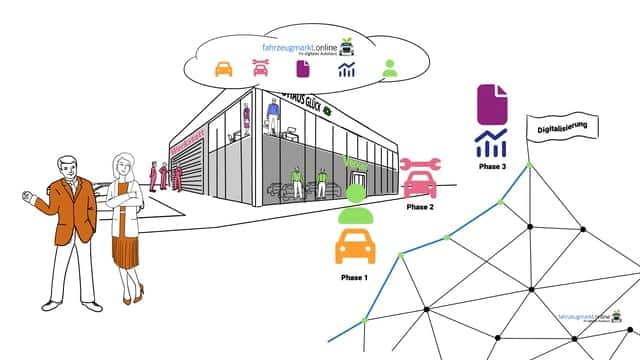The words “remote” and “virtual” are now standard New Work terms. The last few years have given us excellent proof that they also work. And yet, here is the last doubt: How are more complicated issues passed on, how is the security guaranteed that my employees really work and that the home office does not have a negative impact on morale? Many questions and very many possibilities!
Imagine the following situation!
A new employee is hired in your company. All other employees are in home offices or work remotely from other workplaces around the world.
How is it possible to train this employee and give him the feeling of being “present” and “there”?
The following 6 tips will warmly welcome your new employee directly into the team and guarantee that he or she will actively participate in the induction process.
Mix
Since 100% of the onboarding is done in front of the monitor, the training etc. should be well mixed so that no chapter is too long and the new team member loses concentration. There are many instruments here, which you can read about in the further points.
Interaction
The keyword is: participation! Let your new employee participate interactively. Here, for example, you can take short quizzes or/and package them into a short clip where a presenter guides your new employee through various tasks. He can help shape these tasks, have a say in them and follow them closely.
Onboarding Café
Breaks are important and right. Do you have several new employees? Let them all drink a virtual coffee together during the break. This is how the teams get to know each other.
The new employee can then spend the next break with the team, for example, so that everyone can get to know each other.
Intermediate status
An intermediate status query is very useful between automated chapters. This is where your new employee is live in the meeting with you or a member of the department and can ask questions, share briefly, and resolve uncertainties.
These meetings should occur regularly between chapters of induction.
This way you can also see if your new team member has understood the basis.
Q&A round
Lastly, a Q&A round is recommended. Does your new employee have further questions or are things still unclear? Do you still have questions or do certain topics need to be intensified.
After Work
To round out the virtual onboarding, you can host a virtual after work for the new employees and everyone else. An online meeting where everyone is allowed to participate, have an after-work drink on hand, and share ideas.
As you can see, the digital and virtual possibilities are endless. And virtual doesn’t have to mean monotonous and boring. With interactive clips, short explanatory videos, live meetings, etc., the induction can become a real little event.




